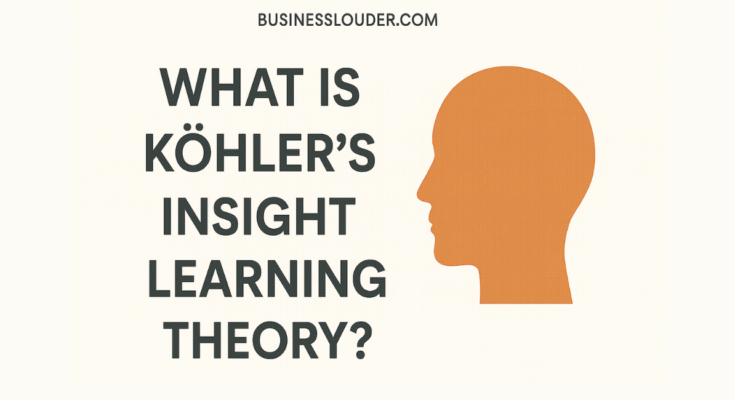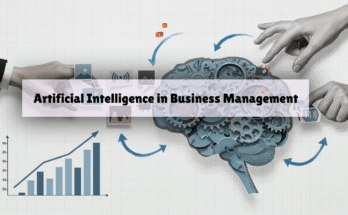Here in this blog post, we will see what is kohler’s insight learning theory. Let’s first understand what is insight learning?
What is Insight Learning?
The theory of Insight Learning is proposed by Wolfgang Kohler.
Insight Learning refers to the sudden understanding of the relationship between a problem and its solution. By learning with the help of insight, the correct and desired solution not only appears seemingly out of nowhere and suddenly, but also repeated readily in subsequent presentations of that problem. Once solved, no matter how many times the problem gets repeated, it will no longer be a problem.
In the Insight Learning Theory, the perceptual stimuli is restructured in various ways and rely on cognitive processes. At times, insight comes dramatically and makes the solution to the problem suddenly clear.
Kohler’s Insight Learning Theory
Kohler’s Learning by insight theory is associated with the cognitive type of theory of learning. Wolfgang Kohler, a German psychologist, advocated insight learning in 1925. This theory is also called Gestalt’s theory of insightful learning.
First of all, Kohler used the term – insight, to describe the learning of apes. In the Learning by Insight Theory, Kohler conducted his experiment on chimpanzees.
Wolfgang Kohler’s Experiment of Learning by Insight Theory
In one of his experiments, Kohler caged a chimpanzee named Sultan. There was a banana bunch hanging from the ceiling and a long stick that was beyond reach outside the cage, and a short stick inside the cage. Sultan took the short stick and tried to reach the bananas with it.
But the short stick was designed in such a way that it was too short. After several unsuccessful attempts, Sultan dropped the idea and started playing. Then suddenly, Sultan jumped up, took the short stick again, but this time, used it to pull in the longer stick. He then used these sticks to reach the fruit by fitting the longer stick together with the shorter one. This action showed Sultan’s cognition.
In another situation, Kohler placed a bunch of bananas hanging from the roof, which was again out of reach of Sultan. This time, there were three boxes that Sultan had to stack on top of one another. They were kept inside in the cage to reach the banana bunch. Sultan tried to reach the bunch by climbing on just one box, and failed.
After many unsuccessful attempts at jumping and trying to reach the bunch, Sultan finally appeared to survey the situation. A while later, he solved the problem with the correct solution. He brought the boxes together, stacked them on top of one another, used the boxes as steps, climbed on them, and finally got to the bunch of bananas.
In conclusion, Sultan used the useless boxes and sticks in a useful manner, through the cognition of insight.
Characteristics of Insight Learning
1. Learning Situation
Insight Learning depends on the arrangement of the problem situation. Insight will easily come if the required materials or tools are arranged in a proper order to perceive the relationship.
In Kohler’s experiment, Sultan solved the problem easily because he saw the boxes or the sticks near him. Humans scan their surroundings and mentally manipulate and rearrange objects in a purposeful manner in an attempt to find a solution.
2. Repetition and Generalization
The solution to a particular problem once solved with insight, can be easily repeated and reused. Once Sultan, for example, used a stick for pulling the bunch of bananas, he will seek out a stick again on the next occasion when a similar problem is encountered.
3. Initial efforts
Insightful Learning has to pass through the trial and error process. This stage, however, does not last long. These initial efforts, in the form of trial and error mechanisms, open a way for insightful learning.
Once a solution happens with insight learning, it can be applied to new problems. For instance, Sultan didn’t show any trial and error attempts when the similar type of problem was encountered. He simply joined the two sticks and approached the bunch of bananas once the cognitive relationship was established.
4. Intelligence
The more intelligent an individual, or species is, the greater will be its insight.
Learning by Insight theory is related to an intellectual level. As a result of this, humans have more insight than lower animals. Learning by Insight reduces the learning time and develops a new relationship between the learner and the problem which is quite common in human adults.
5. Experience
Past experiences also help in insightful solutions to the problems. Past experience, age, familiarity, and keen observation all facilitate insight learning.
The Final Word
A human being, through his/her advanced understanding, judges the relationship quickly between various objects, and sees the patterns disguised in them.
This Learning by Insight Theory is criticized by some of the psychologists who argue that gaining is a gradual process and a matter of practice. However, the cognitive aspect, like those of the roles of perception and knowledge, is of utmost importance in the learning process.




One Comment on “What is Kohler’s Insight Learning Theory?”